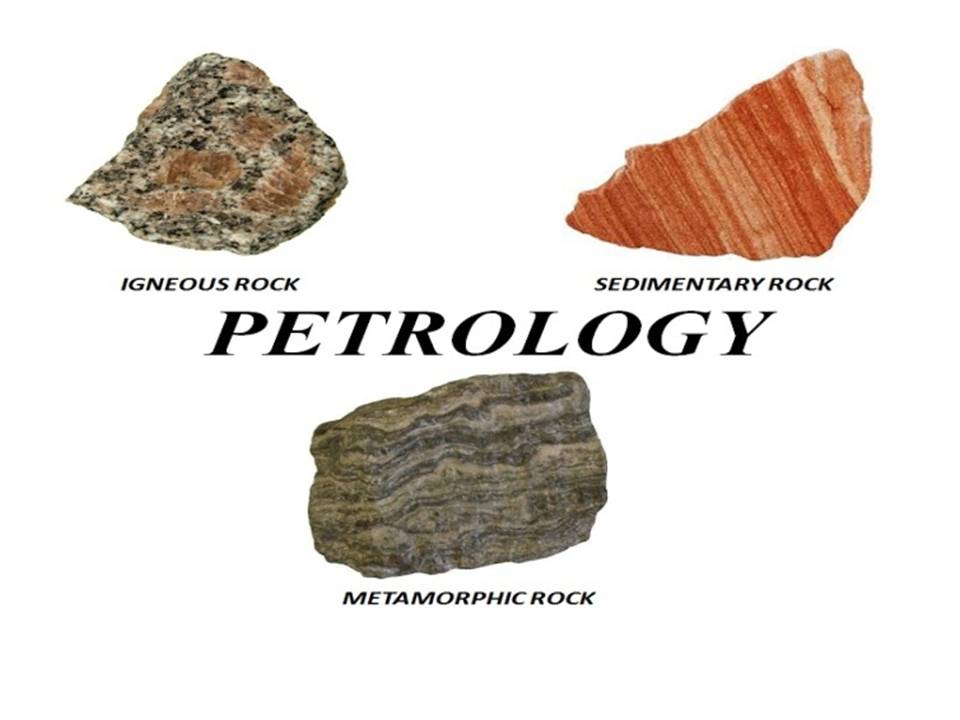
1) Blatt, H. and Tracy, R.J. (1996): Petrology (Igneous, Sedimentary, Metamorphic), W.H. Freeman and Co., NewYork.
2) Bucher, K. and Martin, F. (2002): Petrogenesis of Metamorphic Rocks (7th Rev. Ed.), Springer–Verlag,.Eskola P. 1920. The mineral facies of rocks. Norsk. Geol. Tidsskr., 6, 143-194.
3) Eskola P. 1920. The mineral facies of rocks. Norsk. Geol. Tidsskr., 6, 143-194.
4) Frank S. Spear (1993) Metamorphic phase equilibria and pressure-temperature-time paths. Mineralogical Society of America. ISBN 0-939950-34-0.
5) Kerr, P.F. (1959): Optical Mineralogy, McGraw Hill Book Company Inc., New York.
6) Miyashiro, A. (1994) Metamorphic Petrology. Oxford University Press Oxford.
7) Philpotts, A.R. (1994): Principles of Igneous and Metamorphic Petrology, Prentice Hall.
8) Powell, R. (1978): Equilibrium thermodynamics in Petrology: An Introduction, Harper and Row Publ., London.
9) Rastogy, R.P. and Mishra, R.R. (1993): An Introduction to Chemical Thermodynamics, Vikash Publishing House.
10) Spear, F. S. (1993): Mineralogical Phase Equilibria and pressure – temperature – time Paths, Mineralogical Society of America.
11) Spry, A. (1976): Metamorphic Textures, Pergamon Press.
12) Winter J. D., 2001. An introduction to Igneous and Metamorphic Petrology. Prentice-Hall Inc., 695 pages. ISBN 0-13-240342-0.
13) Yardley, B.W.D. (1989). An introduction to metamorphic petrology. Longman.Essex.
14) Maurice E. Tucker, The field description of sedimentary rocks Open University Press, 1982 – Nature
15) M. E. Tucker, Sedimentary Petrology: An Introduction to the Origin of Sedimentary Rocks Publisher: Wiley- Blackwell; 3 edition (June 29, 2001)
16) Sam Boggs, Jr., University of Oregon Petrology of Sedimentary Rocks, 2nd Edition Cambridge, New York, Melbourne, Madrid, Cape Town, Singapore, São Paulo, Delhi.

Dr. Harel Thomas is Professor in the Department of Applied Geology, Doctor Harisingh Gour Vishwavidyalaya; Sagar Madhya Pradesh.
He obtained his B.Sc.(Hons), M.Sc. in Geology and Ph.D. from Banaras Hindu University, Varanasi,
U. P. India. His Ph.D. work involved in documenting the evolution of the Granulite (Metamorphic rocks) in terms of Pressure,
Temperature, and Tectonic Evolution. He has made significant contributions on
the granulite of Rajasthan. He
had to his credit the Research Associateship and the Young Scientist
Project Awards of the Council of Scientific and Industrail Research [CSIR] and
Department of Science and Technology [DST] New Delhi. He has developed several
softwares in diverse field of Earth Science including calculation of Pressure -
Temperature and activity of metamorphic minerals. The software’s are using in different universities and research labs. He has published more than fifty research papers
in National and International journals. He joined the Department of Applied Geology, Sagar Vishwavidyalaya in year 1998 as an Assistant Professor and he also served as a Reader
in the Department of Geology, Mizoram Central University, Aizawl
in year 2004.
He has been instrumental in the publication of one volume on Metamorphism
and Crustal Evolution in year 2005, which contain a wealth of scientific
data. He has developed nearly 30 E-content on Petrology (Metamorphic &
Igneous) and Mineralogy through EMMRC, Sagar which are already available on CEC-UGC-MHRD, New
Delhi web site. He also recorded more than 40 footages on metamorphic and igneous petrology which are continuously
telecast on SWAYAMPRABHA National Channels. He has supervised many students for Doctorate Degrees.
All are well established in different organization such as NIT, Central
University, and Officers in GSI. He is a regular visiting Professor in the Central Department of Geology, Tribhuvan University; Kathmandu
Nepal Since 2012.
He
is also engaged
in Massive Open Online Course (MOOC) on petrology. The course had successfully completed third cycles (Nov. 2016, July, 2017 and
July, 2018) with rating of 4.9 out of 5. He had also successfully completed first cycle (July,
2018) MOOC on Metamorphic Petrology for undergraduate students.
Since January 2019, he is engagged in running the two MOOCs one on
Metamorphic Petrology & Thermodynamics for post graduate students and
another on Crystallographic & Mineralogy course for undergraduate students.
He has received Life
Time Achievement Award-2018 for Outstanding
Contribution in the Field of Applied Geology on the Occasion of
International Conference on Energing Issue in Agriculture, Environmental &
Applied Sciences for Sustainable Development at SHUATS, Allahabad.
He is currently teaching metamorphic petrology,
igneous petrology and mineralogy in the postgraduate and undergraduate students
of the Department of Applied Geology Doctor Harisingh Gour Vishwavidyalaya, Sagar. The thrust
area of his research interest is the metamorphic and tectonic evolution of the
high-grade gneiss and granulite.
DOWNLOAD APP
FOLLOW US